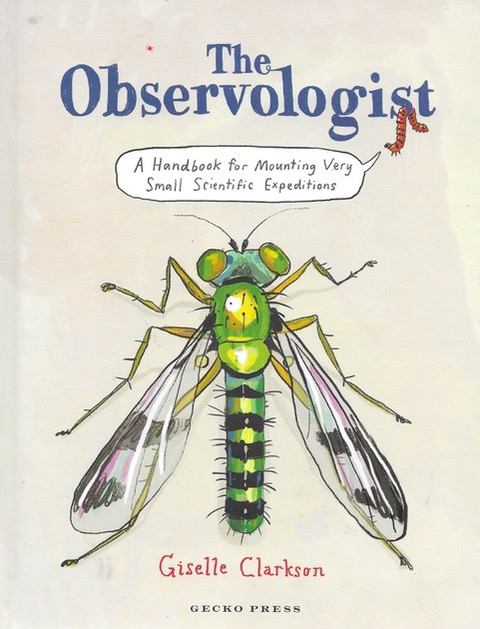Book Review

“The Observologist”, written and illustrated by Giselle Clarkson. Published by Gecko Press, price $39.99. Reviewed by Tony Orman.
The Observologist” is a highly illustrated, fun-filled guide for young budding naturalists and that has to be great intention in encouraging youngsters to get out in the outdoors instead of being slaves to the mobile phone, internet and television. But the book goes well beyond just inspiring youngsters into the outdoors and observing nature. Adults in general, could do with a dose too.
While the book doesn’t touch on stream life, the trout fishing parent(s) could be a subject area to explore with the youngster(s). Looking at various nymph life that is trout food, identifying the species and working out which habitat (e.g. fast flowing water or slower areas or riffles) each prefers is an area to observe and study. Or how about eels, fascinating creatures, a fish of mystery in terms of going to sea to spawn? Or trout themselves, such as studying a fish killed for the dinner table and analysing the food eaten? How much is aquatic and how much is terrestrial, e.g. cicada, brown beetles, willow grub?
Leaving the watery environment how about did you know toadstools and mushrooms are one and the same? Or that many insects have compound eyes that can see backwards and forwards at the same time? That earthworms can feel pleasure and pain? It’s not just for kids, as adults’ curiosity can be stimulated to accompany their youngster and explore the natural world around them.
This book in encouraging kids to go investigating and observing Nature’s creatures is tailor-made for parent and child to do so together in a sort of scientific research project. Giselle Clarkson has set her text and illustrations out in comic book style making it immediately appealing to young minds. Yet it will introduce readers, of all ages, to the world about them.
The authors text is written with humour, encouraging the fun element to surface from the young reader.
This book is an antidote to boredom that may invade young minds, an invitation to put aside the digital gadgetry and to go out and observe the natural world with curiosity to the fore.
The book has a sensitive touch, such as imparting advice on carefully handling earthworms or how to help an exhausted honey bee or bumble bee.
The author herself a confessed observologist with “an insatiable curiosity for tiny creatures” was encouraged by her parents to go “gently poking around under rocks and logs”.
“Watching insects and looking for other tiny interesting things genuinely is one of my favourite hobbies,’ she says. “I hope my book gets children started or encourages them further, on a lifelong interest in the natural sciences. When you’re an observologist, you can always marvel at the cleverness of a spider’s work or be delighted by the patterns in a moth’s wing and a bit of everyday joy and wonder is something we can all use.”
“I think being a conservationist starts when you feel a personal connection to a plant or an animal or a place., and observing the quiet magnificence of a spider, a moth or dragonfly is a wonderful way to building that relationship with nature.”
The book should be introduced to every youngster and perhaps could be a standard primary school textbook?
Highly recommended for every family, kids and even the duo of parent and child to go observing and learning together.

